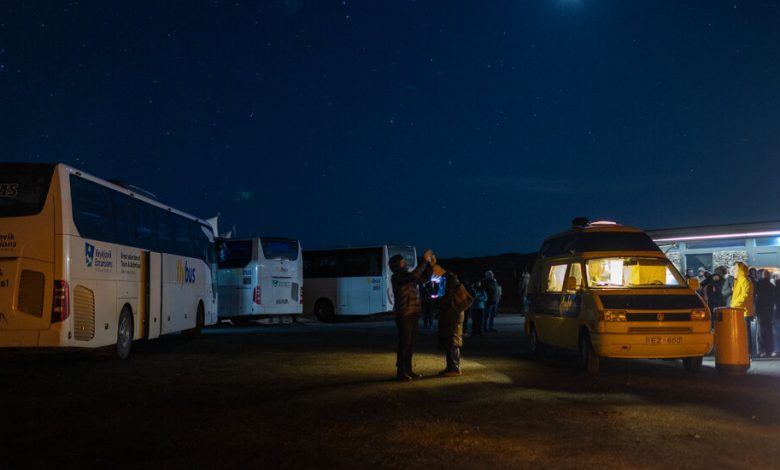Aurora Tourism in Iceland: You Can Seek, but You May Not Find

From the outside, it may seem like the northern lights dance across Iceland’s skies each night. On Icelandair ads, planes fly across shimmering curtains in the sky. On social media, travelers gaze at the green bands above them. The lights are even on some recycling bins in Reykjavík, the capital: “Keep Iceland Clean.”
In the past decade or so, an aurora borealis industrial complex has boomed in Iceland. Many rent a car and go out on their own, but there are northern lights big bus tours and northern lights minibus tours and northern lights Super Jeep tours. There are private guides and boat cruises. There’s an observatory base camp. There’s even a museum.

On winter nights, fleets of buses ferry aurora hunters into the rural areas around Reykjavík.Credit…Sigga Ella for The New York Times
But the lights can be elusive.
“Tourists sometimes expect, like, ‘At what time do you turn them on?’” said Björn Saevar Einarsson, a forecaster at Iceland’s meteorological office, chuckling. “Like we have a switch in the back room.”
This year, the letdowns are especially intense.
The northern lights, which are also called the aurora borealis, are most visible when there are solar flares, which are big eruptions on the sun that send electronically charged particles toward Earth. This year, the sun is approaching the peak of its 11-year cycle of activity, which some assume means that the displays could peak, too.
But the enhanced solar activity doesn’t necessarily mean the northern lights will be brighter or more frequent, scientists wearily explain. Instead, they mostly mean that the lights can be seen farther south than usual: In recent months, they have been visible in Arizona, Missouri and southern England.
